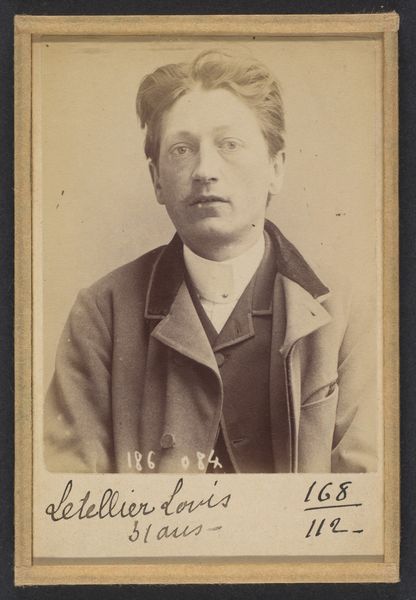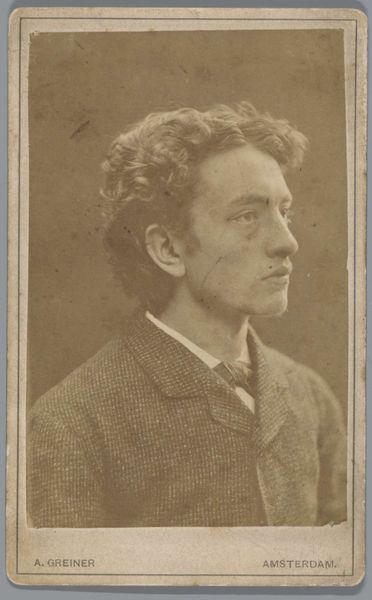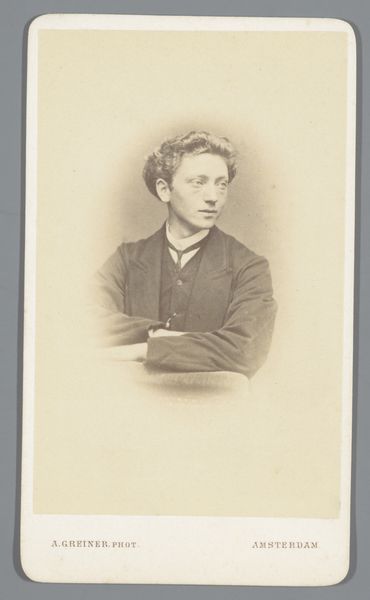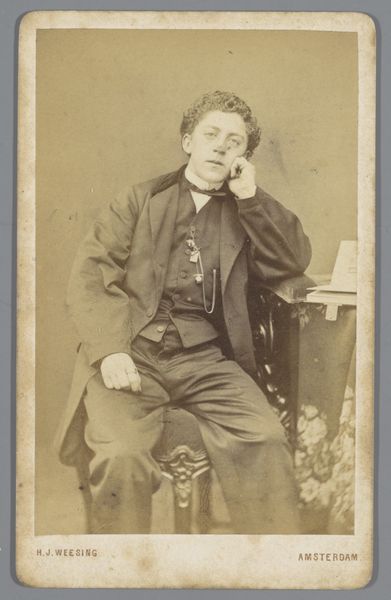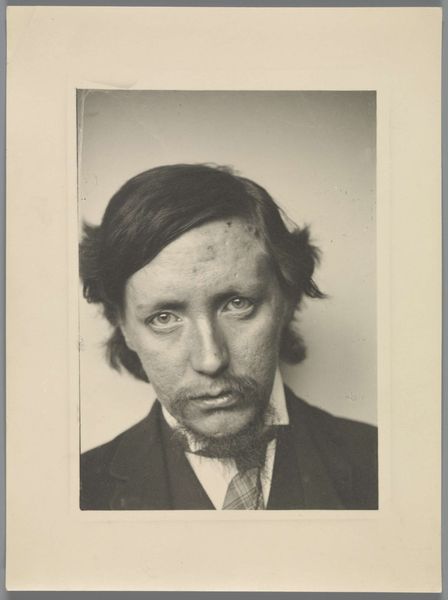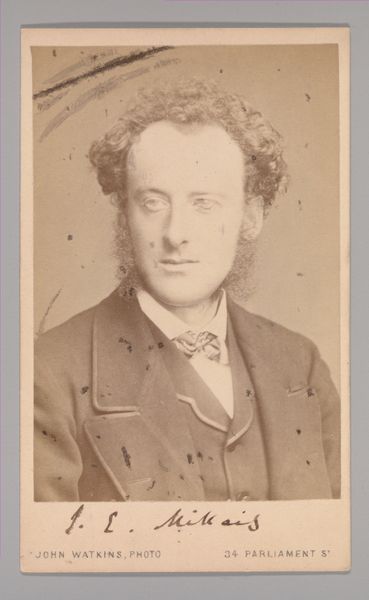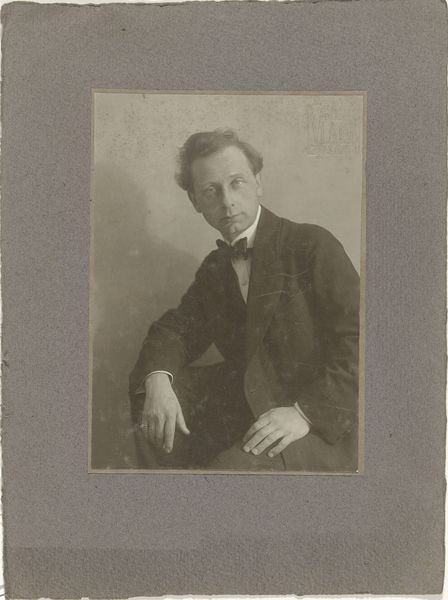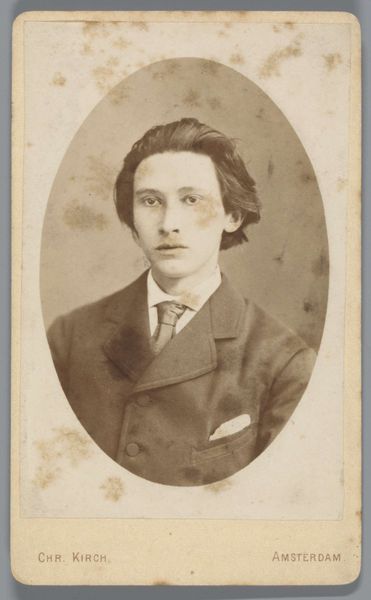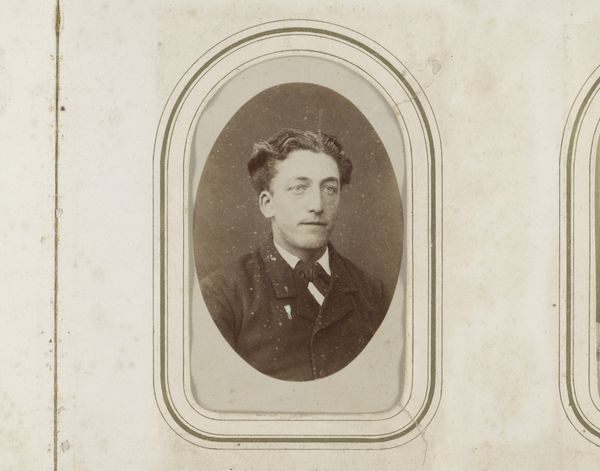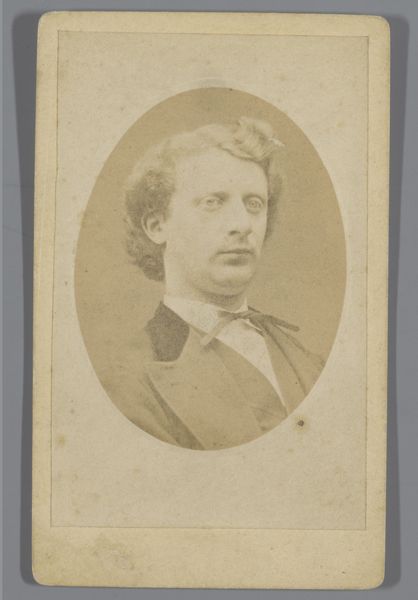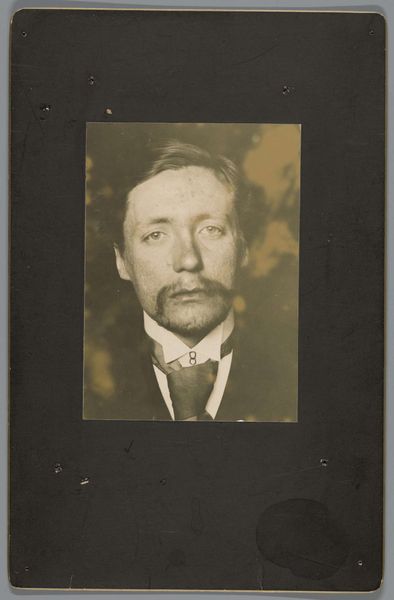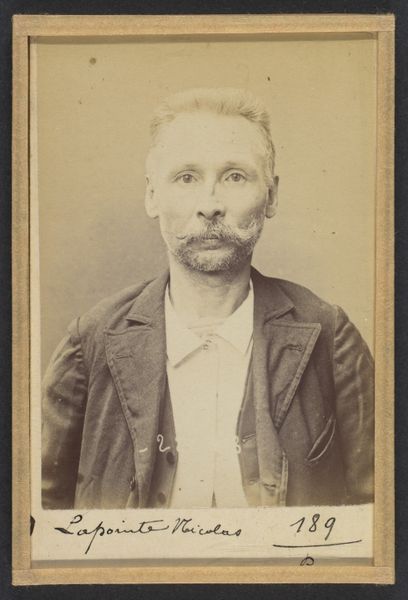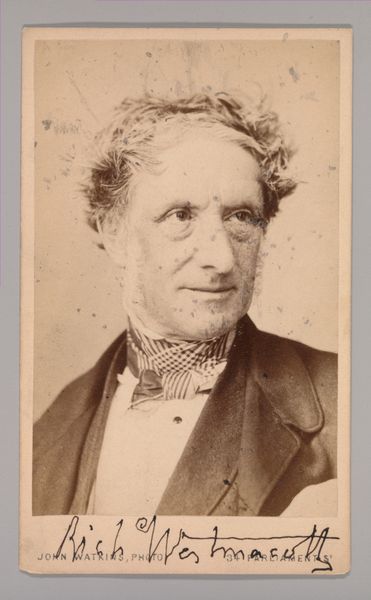
photography, gelatin-silver-print
#
toned paper
#
photography
#
portrait reference
#
coloured pencil
#
gelatin-silver-print
#
19th century
#
realism
Dimensions: height 176 mm, width 130 mm, height 2017 mm, width 135 mm
Copyright: Rijks Museum: Open Domain
Editor: Here we have what appears to be a gelatin-silver print, with colored pencil, potentially from 1889. It's a double portrait called, rather straightforwardly, "Portraits of Willem Kloos and Isaac Israels" by Joseph Jessurun de Mesquita. There's something quite haunting about its faded tones. The eyes bore right through you. What strikes you when you look at it? Curator: Haunting is the right word! It's as if Mesquita captured more than just a likeness; he caught a fleeting shadow of their souls. Do you notice how the soft focus and subdued color create this aura of melancholic introspection? It speaks to the fin-de-siècle mood, a questioning of values and an obsession with the interior life. And isn't it intriguing how photography, then relatively new, became the perfect medium for portraying the 'real' but with an artistic license. It could document and, at the same time, invent. Editor: Invent, how so? Curator: Well, look at the subtle use of coloured pencil, for example. It delicately enhances the features, but also adds a layer of artistic interpretation. This wasn't simply a snapshot. It was a carefully constructed image, playing with the notions of identity, reality, and artistic license, making it more emotionally charged, more symbolic perhaps. One begins to question how truthful and authentic we are behind our controlled gazes, or what can the artist capture that remains unnoticed. Editor: So, it's both capturing a moment and crafting a narrative. I initially saw only sadness but now, I also find myself wondering what stories are hidden behind those somber faces. Curator: Precisely! It's in that tension between the seen and unseen, the known and unknown that this portrait gains its enduring power, and it invites us to create a narrative in our own mind, like a poem for the eye.
Comments
rijksmuseum about 2 years ago
⋮
Joseph Jessurun de Mesquita was the odd man out in the group of artists and writers that came together in Amsterdam in the late 1880s. He wrote a guide for amateur photographers and was engaged to take photographs by the Leiden National Museum of Antiquities. Above all, however, he re-invented photography. He portrayed his good friends, including Breitner, Israels, Kloos, Gorter, and the composer Diepenbrock very directly and close up.
Join the conversation
Join millions of artists and users on Artera today and experience the ultimate creative platform.
